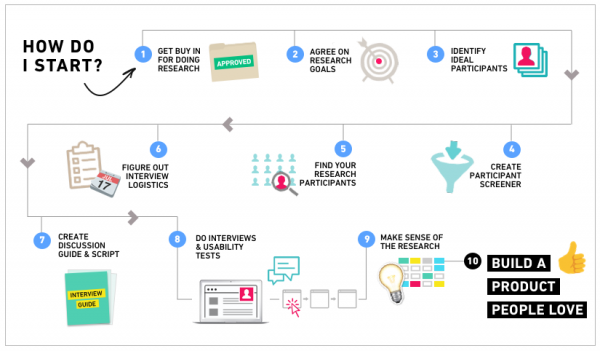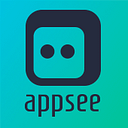UX designers are lifelong learners. User research, usability testing, and UX analytics are all methods of learning about your users and understanding user behavior.
Sarah Doody believes that UX professionals are also educators, bringing them into the design process by asking questions and interacting with colleagues and clients. Through her YouTube videos, online courses, weekly newsletter, and in-person workshops, Sarah teaches people to “think like a designer”.
With 15 years of experience in UX design, Sarah divides her time between consulting companies on how to create a product that users will want and need, and helping UX designers learn new skills, hone their portfolio, and land their dream jobs.
We had the chance to chat with Sarah about her own career journey, her UX design philosophy, and her advice on UX research, mobile app design, and job hunting. Check out her input.
How did you get started as a UX designer, and what led you to your current role as a consultant and educator?
My UX career was an accident. To be honest, I didn’t even know what UX was. My original plan was to study neuroscience because I thought it was an interesting mix of creativity and science.
I took a year off before university and learned about web design while doing an internship at a small design agency. I basically went through the process of learning web design, graphic design, and front end coding. Then, one day I realized there must be someone who makes sure what gets shipped matches up to what we envisioned in the beginning. That’s when I read the book, Information Architecture For The World Wide Web, and the rest is history!
I worked internal at companies of all stages and sizes for years doing UX and in 2012 I launched my own consultancy.
I’ve always loved teaching and in 2011 General Assembly asked me, along with a colleague, to create the curriculum for and teach the very first 12-week UX immersive here in NYC.
Today, my business is split about 50/50 between doing client work and doing UX education through my online courses and in-person workshops.

Describe your UX design philosophy in a nutshell. What do you think makes the difference between an excellent user experience and an average or poor one?
My mantra is that I want to help people learn to “think like a designer” — that’s the heart of everything I do.
I don’t believe that the role of UX Designer will ever go away, but I also believe that you don’t need the word “UX” or “Design” in your job title to have influence on the experience that someone has with your brand.
As UX professionals, we need to have a balance of being able to actually execute UX but also educate others about UX.
The best UX designers I know find a way to always be educating. This can be done through involving others in the design process, the way they present (and justify) their design decisions, the questions they ask in stakeholder interviews. Every interaction with other team members, clients, and stakeholders is an opportunity to educate them so that they learn how to think like a designer.
In terms of my design philosophy, I’m a huge advocate for research. The best competitive advantage you can have is to know your people (customers) better than they know themselves. If you can achieve this, then you’ll be able to build something you know they want, not something you hope they need.
I don’t believe that the role of UX Designer will ever go away, but I also believe that you…
One of your courses is all about user research, a step that is often stressful and full of guesswork for designers. Can you provide a few tips on how to make the research process easier and more data-driven?
First, I recommend people check out the research playlist on my YouTube channel for a ton of actionable advice on user research including topics such as: where to find user research participants, how to convince your boss that research matters, and questions to ask in a user research interview.
To make the research process easier, I recommend that companies create a cadence of research. By doing more frequent research, it will become a more natural part of your product development process, and you’ll develop a repository of user research resources, tools, and workflows so that you and your team don’t feel like you’re starting from scratch every time you do a research project. For example, here’s a free guide I have with 35 questions for a user research interview.

What do you think are some of the biggest challenges when it comes to analyzing and improving user experience? What do companies often miss or neglect?
Two things stand out to me.
First, is the idea that “design” will solve all the problems. For example, if a company’s homepage isn’t converting, often times they ask me to re-design it, or show me a redesign that someone else did. The problem is that they focused on the visuals and didn’t focus on the whole experience, in this case, the message or story that the homepage is communicating. Design without proper attention to content is a recipe for failure.
Second is the problem of not isolating variables when you are testing. If something is broken, companies like to change a lot of things at once. The problem is that you don’t get to truly see which things are having impact. Be patient. Test often. And make sure you know what variables you are testing in your product.
Second is the problem of not isolating variables when you are testing. If something is broken,…
What’s your mobile UX pet peeve? Something you encounter often in mobile apps and really don’t like?
I can’t stand when an app doesn’t use style type of visual cue to let you know how long something will take, or that an action is in progress. For example, if you’re searching for flights, tap the “search” button and then you see a white screen (or something similar) you have no idea if it’s searching or if something’s broken.
A solution could be simple text that says “searching” or some type of animation to provide more visual interest, and let’s face it, distraction, to help communicate that the app is not broken, it’s just thinking or processing.
Name a few mobile apps that you think are really perfect, and get every aspect of UX right.
Just this evening I set up my new Sonos 1 speaker. The whole experience was SO easy. I didn’t read the instructions. I just plugged the speaker in, got the Sonos app on my iPhone and was listening to music in about 5 minutes.
I recently started using the Peloton app. They have more than cycling on the app, including treadmill workouts, outdoor runs, yoga, pilates, and more each week. I love how easy it is to plan my weekly workouts and choose between their live and on-demand classes.
Headspace is one I try to use daily. It’s in the top left position of my iPhone home-screen to encourage me to use it. Before I got the app, I had no idea about the range of meditation topics. However, they’ve done a great job at making discovery very easy within the app, and I actually used some athletic performance meditations throughout my marathon training and while I was waiting for the start of my NYC marathon a few weeks ago!
I’m also a fan of Hopper for tracking flight prices and helping me decide where to go and what to book. It’s similar to Google Flights, but honestly the UX is so much easier. The visual design helps me see the weeks where flights are affordable and when they’re expensive.
What do you think are some upcoming changes or trends we will see in mobile UX?
I think we’ll see a move from clicks to conversation. This means that I think we’ll see more use of chatbots to start conversations that gather information about the user so that we can tailor the experience they have later in the product. It’s about figuring out how to gather the most useful information that will allow us to segment our customers and send them in the right direction through our product experience.
You work a lot with UX designers who are job hunting or working on their portfolios. What’s the biggest misconception designers have about their job search, and how can they overcome it?
I’ve been researching UX careers (including portfolios and the job search) for the last 18 months and I’ve conducted at least 100 hours of research with UX professionals of all stages.
The number one thing that continues to shock me is how laissez-faire people are about the job search. I don’t know why, but people seem to be using LinkedIn as a crutch in the job search. So many people simply wait for people to contact them on LinkedIn. It boggles my mind! When I was actively job searching I had spreadsheets to help me stay organized, make sure I followed up, etc.
If you want to get hired, you need to be far more offensive. You need to take the reins. You need to each out. You can’t just update your LinkedIn, turn on the “I’m looking” option, and hope that people contact you.

What are your favorite blogs, communities, influencers to follow?
Tina Roth Eisenberg — @swissmiss
John Maeda — @johnmaeda
Paul Jarvis — @pjrvs
CBC Spark Podcast — https://www.cbc.ca/radio/spark
Build by Femgineer — https://www.youtube.com/channel/UCr3v8cEC5IGfWBS03PpsfKw
Can I also say my community? My UX Portfolios & Careers Tribe is almost at 3,000 members and the members are so supportive, encouraging, and provide constructive feedback to each other as they navigate their UX careers and job searches.
Top item on your bucket list: 3,2,1, go!
Spend a month traveling around New Zealand.

Thanks for chatting with us, Sarah!

